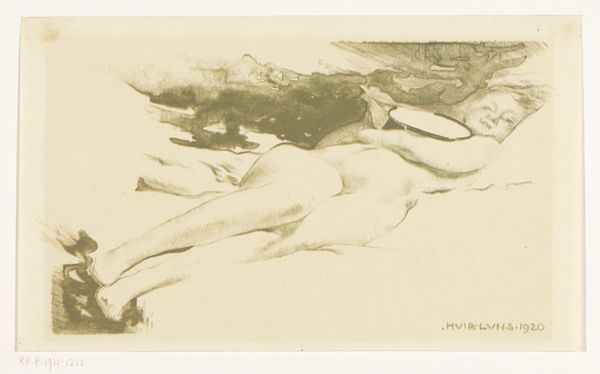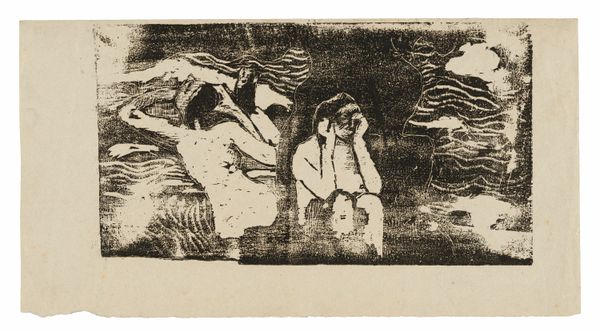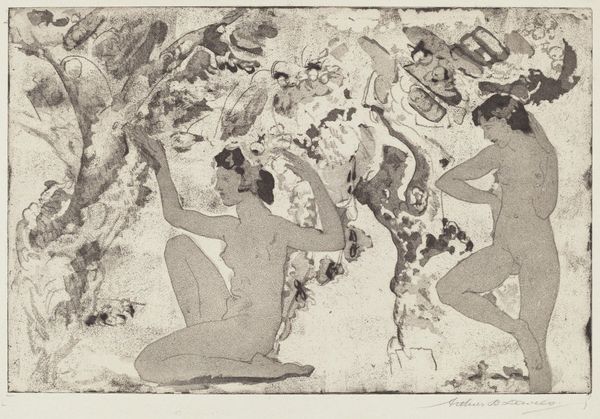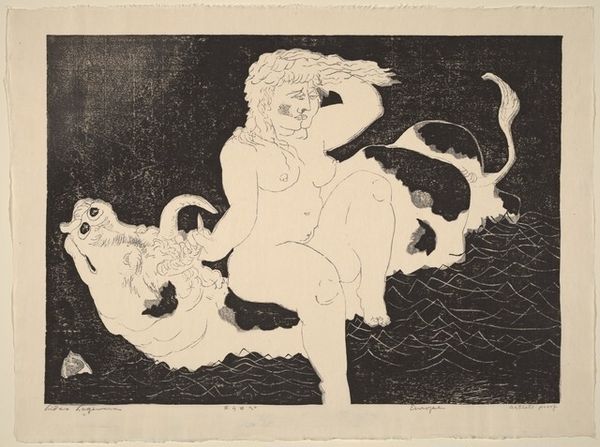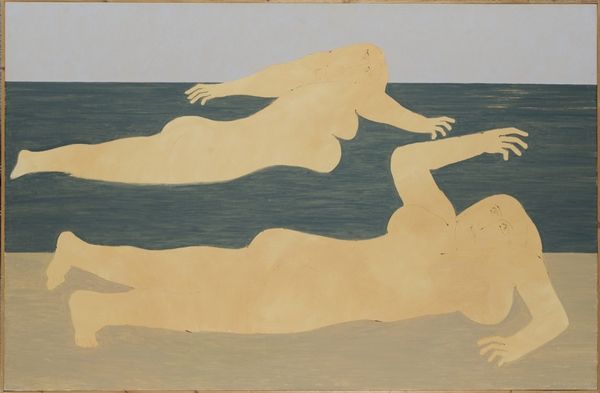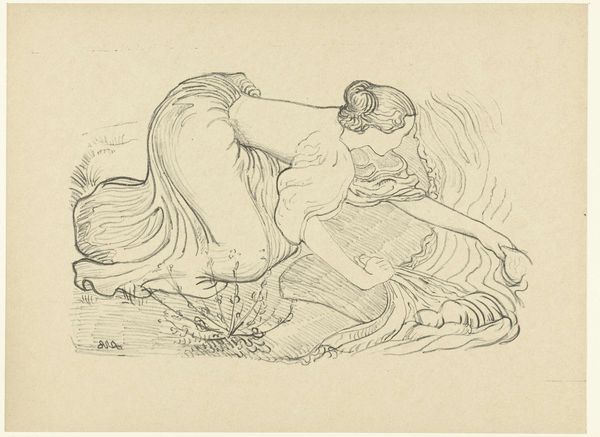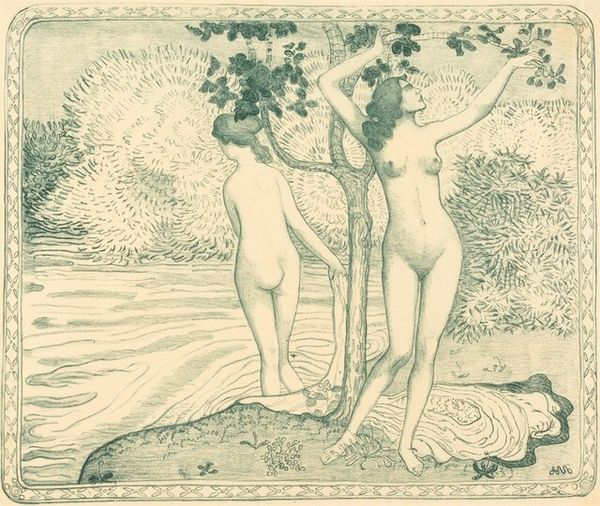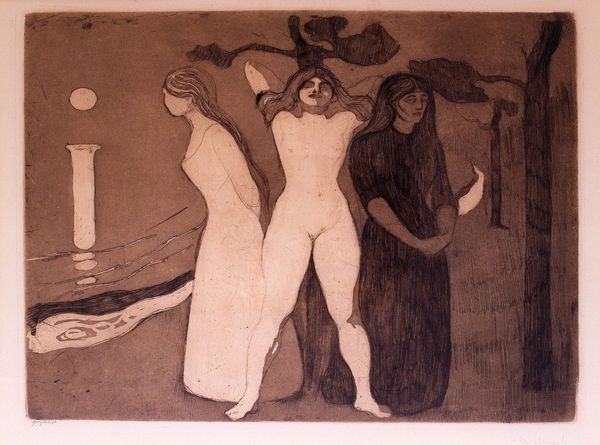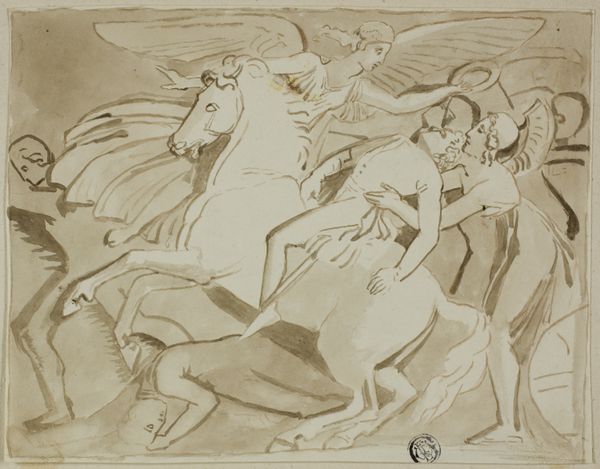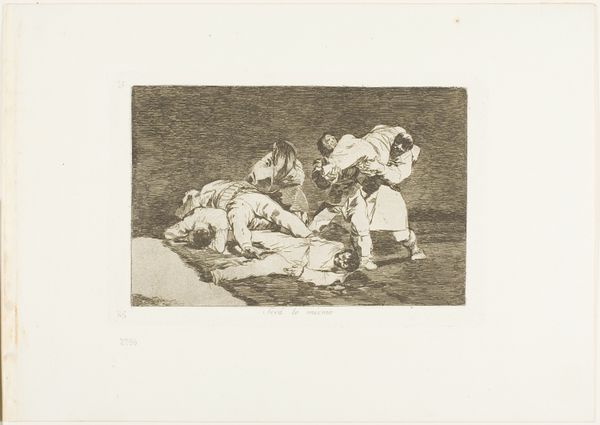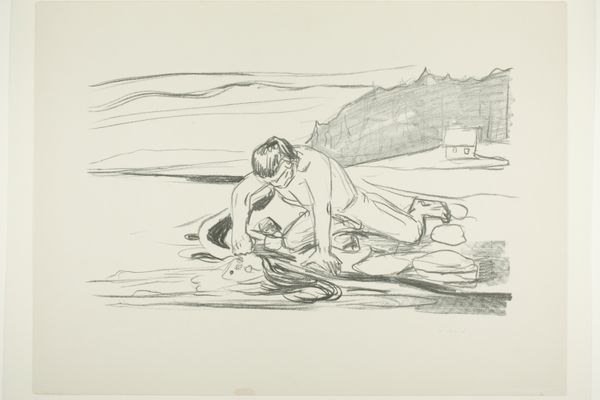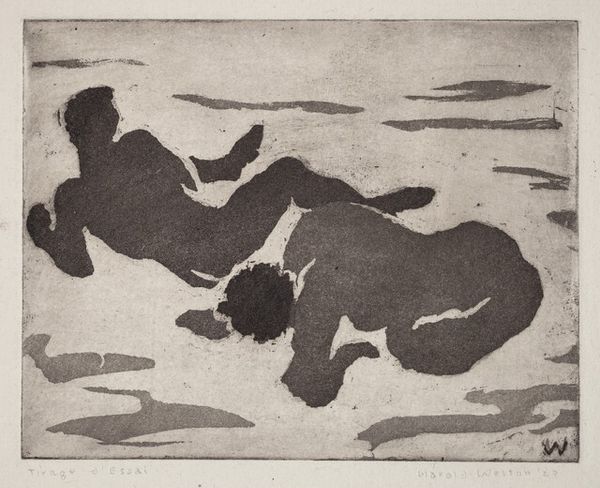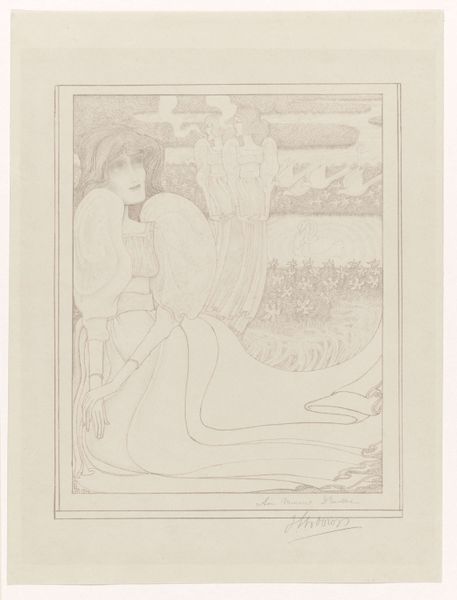
Copyright: Public Domain: Artvee
Editor: This is Edvard Munch's "Women Bathing," created in 1979 using etching. There’s a dreamlike quality to the hazy monochrome palette and blurred figures. What strikes me most is how it feels less like a representation of bathing and more like a memory, or a fleeting emotion. How do you interpret this work? Curator: Indeed. Note how Munch, even so late in his career, grapples with potent archetypes of femininity within this seaside scene. Think about water as a symbol—birth, purification, the unconscious. Are the women emerging from it, or simply contained by it? Editor: That’s a compelling point. The figure emerging from the water on the left— is that meant to represent rebirth or perhaps some deeper psychological journey? Curator: It could be both. Munch was deeply interested in the human psyche. Consider, also, the differing postures of the women. One washes, immersed; another stands tall, gazing out. Each embodies a different aspect, perhaps, of womanhood or even a stage of life. Is Munch creating types, or portraying states of mind? Editor: I see what you mean. And the heavy, almost melancholic, tone adds another layer. Is he suggesting something beyond the simple act of bathing? Curator: Perhaps. Or consider this monochrome rendering: in foregoing color, Munch heightens our sensitivity to gradations of light and shadow. How does this choice invite the viewer to confront themes of reflection, concealment, or exposure, which he explored throughout his career? Editor: It is fascinating to realize the depth of symbolism he layers into seemingly simple scenes like this. It's made me think differently about how artists use visual cues to unlock complex ideas about human existence. Curator: Precisely! Visual symbols evolve over time and invite varied personal encounters and broader cultural conversations. Keep an eye for those evolving visual signifiers.
Comments
No comments
Be the first to comment and join the conversation on the ultimate creative platform.
